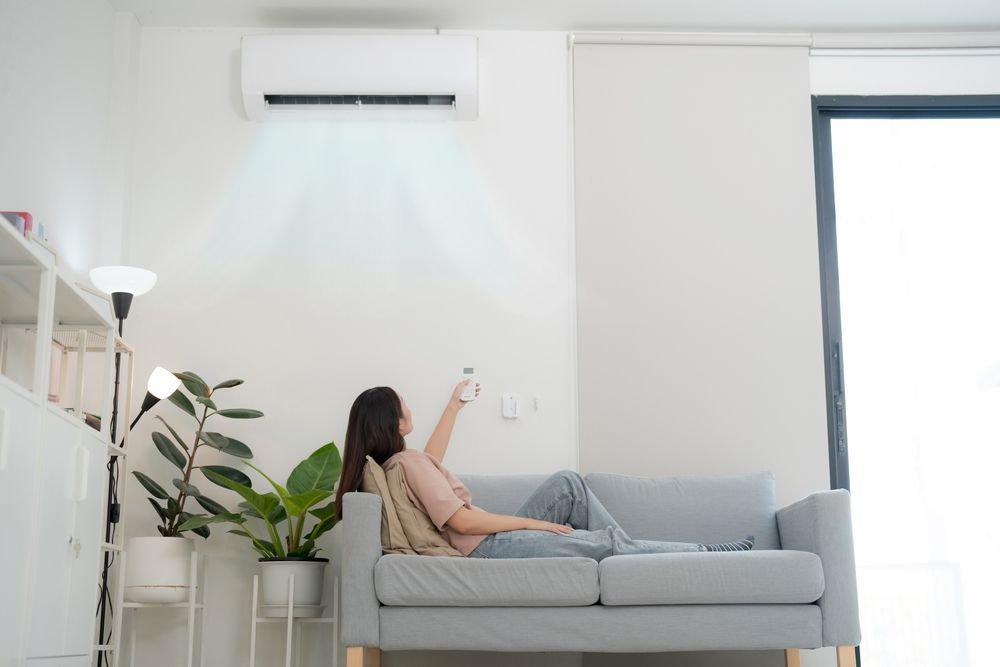Finding the right air conditioner for your room isn’t just about cooling—it’s about comfort, energy efficiency, and choosing a unit that matches your space. With so many models available, from compact window units to sleek split systems, it can be difficult to know where to start. But when you match the right type of air conditioner to your room size, layout, and usage habits, you’ll get better results with lower bills.
This guide breaks down the main types of air conditioners and helps you choose the one best suited for your room needs—whether you’re cooling a small bedroom, a large living room, or even a home office.
Consider Room Size First
Before you explore specific types, start by measuring the square footage of the room you want to cool. The cooling power of an air conditioner is measured in BTUs (British Thermal Units). The larger the room, the higher the BTU rating you’ll need.
Here’s a quick reference:
-
100–300 sq. ft.: 5,000–7,000 BTUs (small bedrooms, offices)
-
350–500 sq. ft.: 8,000–10,000 BTUs (medium bedrooms, small living rooms)
-
550–800 sq. ft.: 12,000–14,000 BTUs (large rooms, open floor plans)
-
800+ sq. ft.: Consider multiple units or a central/split system
If your room gets direct sunlight, has high ceilings, or houses several electronic devices, you may need a slightly higher BTU capacity.
Window Air Conditioners
Best for: Single rooms with a suitable window
Window AC units are among the most popular and affordable choices for cooling a room. They fit directly into a window opening and are relatively easy to install and remove.
Pros:
-
Cost-effective
-
Energy-efficient models available
-
Easy to install and remove
-
Great for apartments and small rooms
Cons:
-
Blocks window access
-
Noisy compared to split systems
-
Not ideal for oddly shaped windows
These units are great for small to mid-sized bedrooms, home offices, or dorm rooms.
Portable Air Conditioners
Best for: Renters or rooms without window access
Portable ACs are freestanding units with an exhaust hose that vents through a window or sliding door. They offer flexibility for people who want to move their cooling system from room to room.
Pros:
-
No permanent installation required
-
Easy to move
-
Works well in homes where window units are restricted
Cons:
-
Noisier than other types
-
Less efficient than window or split units
-
Requires floor space
This is a good option for renters, temporary setups, or rooms with unusual window sizes.
Split-Type Air Conditioners (Ductless Mini-Splits)
Best for: Long-term cooling with higher energy efficiency
Split systems consist of an indoor unit mounted on a wall and an outdoor compressor. They’re more expensive upfront but offer excellent performance and energy savings.
Pros:
-
Quiet operation
-
Very efficient (especially inverter models)
-
Sleek, space-saving design
-
Doesn’t block windows
Cons:
-
Requires professional installation
-
Higher initial cost
-
Not portable
Ideal for master bedrooms, home offices, and living rooms where you need quiet, steady cooling without compromising aesthetics.
Through-the-Wall Air Conditioners
Best for: Permanent cooling in rooms without accessible windows
These units are similar to window ACs but are installed directly through a hole in an exterior wall. They’re more secure and often quieter than window units.
Pros:
-
Permanent, secure installation
-
Doesn’t obstruct windows
-
Available in high BTU capacities
Cons:
-
Requires wall modification
-
Installation costs more than window units
Perfect for homeowners or ground-floor apartments looking for a permanent solution.
Central Air Conditioning
Best for: Whole-home cooling
If you’re looking to cool more than one room and have existing ductwork, a central air conditioning system is the most efficient option.
Pros:
-
Uniform cooling throughout the home
-
Quiet operation
-
Adds value to your property
Cons:
-
High installation and maintenance costs
-
Not cost-effective for small homes or individual rooms
Best for large homes or households wanting seamless cooling across multiple rooms.
Smart Features to Look For
Modern air conditioners come with several features that make them easier to use and more efficient:
-
Wi-Fi connectivity: Control via smartphone or voice assistant
-
Programmable timers: Set schedules to save energy
-
Energy-saving mode: Automatically adjusts cooling to reduce usage
-
Dehumidification mode: Helps reduce humidity on muggy days
-
Remote control: Essential for convenience in larger rooms
These added features might cost more upfront, but they can result in long-term savings.
Energy Efficiency Ratings
Always check the Energy Efficiency Ratio (EER) or Seasonal Energy Efficiency Ratio (SEER) for split and central systems. Higher numbers mean better efficiency.
Look for units with an Energy Star rating, which confirms the unit meets government energy-saving standards. Over time, energy-efficient models can reduce your utility bills significantly.
Noise Level Considerations
Noise can be a big deal, especially in bedrooms, nurseries, or home offices.
-
Split-type ACs: Quietest (indoor units can run as low as 20–30 dB)
-
Window and portable units: Typically run between 50–70 dB
-
Through-the-wall: Slightly quieter than window units, but louder than splits
If silence matters, prioritize models marketed as ultra-quiet or look at the decibel rating before purchase.
Design and Aesthetics
Some air conditioners stand out like a sore thumb, while others blend in. Split-type units offer a cleaner look, while portable and window units can be bulkier.
Choose a unit that suits your room style:
-
White or neutral color units tend to blend into most spaces.
-
Slim-profile designs are available for those concerned about space.
You don’t need to sacrifice style for comfort.
The best type of air conditioner depends on your room size, installation preferences, budget, and lifestyle. For smaller spaces, window or portable ACs offer convenience and affordability. If you’re after long-term savings, comfort, and a quiet environment, investing in a split system could be the better option. Whatever you choose, focus on getting the right BTU rating and energy efficiency for your space—you’ll feel the difference every day.



